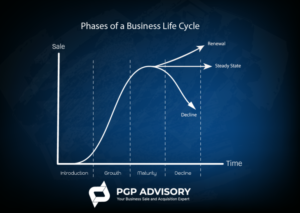

Welcome to 2023: Your Business Guide to Surviving and Thriving the Year Ahead
PGP Advisory certainly hopes you had a joyous holiday season and a Happy New Year. As we enter into 2023, here are some of the challenges we anticipate and our strategic advice on how to combat and prepare for what may be a rocky and windy road ahead.
How to Prepare for Business Challenges in 2023

Reflecting on 2022
Business owners have faced huge challenges and undergone an incredible amount of change over the past few years, and this won’t slow down in 2023. Businesses will have to deal with the aftereffects of the global pandemic, Russia’s invasion of Ukraine, economic challenges, as well as an ever-faster development of technologies.PGP Advisory has several years experience of ongoing change and evolution of the industry. Below are key challenges to watch out for in the new year and insights into how business owners can prepare for obstacles they may face in 2023.The Looming Recession
As a recession for 2023 is likely probable, entrepreneurs will need to begin preparing their businesses now for the challenges ahead. Sales could slump, budgets could tighten, and securing capital could become a lot harder. Entrepreneurs will need to adjust their expectations from the big venture deals of the past decade.
How to Respond: PGP Advisory highly suggests meeting with your accountant. Now, is the time to audit your books and ensure you have the cash reserves to weather the bad times. Accounting can be an afterthought for new founders, PGP Advisory recommends hiring a third party to audit your books. Business owners should also consider auditing their processes too. When a company is in a high-growth stage, it might adopt ad-hoc systems that are fine for the moment but will need to be revamped in slower months to be sustainable and efficient.
Downturns in Sales
Business owners will likely continue to deal with price adjustments well into 2023. Inflation and interest rates often indicate how willing people are to spend. Consumers are shifting their focus to items they deem essential and highly valuable.
How to Respond: Business owners should consider adapting their business model or figure out the right pricing structure so they can continue to survive. This is a great opportunity to connect with customers to understand their needs. Perhaps there are new avenues for sales opportunities to explore.
Employee Retention, Engagement and Productivity
We’ve been hearing about the “War for Talent” for years, but now it feels like the war is deepening. Companies across industries are facing massive gaps for vital future skills, and they will need to re-skill or up-skill massive sections of their workforce to get ready for the 4th industrial revolution. On top of that, the pandemic has made many people reevaluate their jobs, leading to mass resignations in many sectors.
How to Respond: Create clear channels where employees can raise concerns and health issues. Stay up to date with emerging issues. Perhaps your business can allow flexible working hours to allow employees to attend to personal issues. Encourage employees to keep strict working hours to avoid the common burnout issue. Find out what you can provide for employee mental health support. Additionally, taking steps like hiring people straight out of school, employing low-code or no-code software for critical needs, and instilling cultures of continuous learning.
Accelerated Digital Transformation
Artificial intelligence (AI) is already starting to augment all of our businesses, and that trend will continue to accelerate next year. This is rapidly creating a world of ever-faster technological developments.
How to Respond: Every business must think of itself as a tech business. Companies need to re-design their processes and ensure their people have the skills needed for a world where we increasingly collaborate with and work alongside capable and intelligent machines.
Summary – Stay Flexible
It’s important to keep in mind that there will always be unexpected disruptions in our lives. Businesses should plan for these disruptions and make sure everyone knows how to respond when things go wrong. These unprecedented challenges provide opportunities to stay flexible in the months ahead. The most successful businesses, will be those that adapt quickly.


Must-Have Value Drivers for a Successful Business
How to Increase Your Business Value Using Value Drivers
Value drivers are characteristics of a business that either reduce the risk associated with owning the business or enhance the prospect that the business will grow significantly in the future. Every business owner should consider these essential factors to increase cash flow, as well as reduce risk, thus enhancing the overall value of the company.
An ongoing assessment of your business’ value drivers is integral to success. Profitability is hugely important, but implementing valuation drivers can result premiums. The valuation process involves an assessment of the company that should be part of any owner’s standard operating procedure, providing meaningful, actionable information highlighting the intrinsic value of your business and ultimately maximize returns.


Top Factors that Increase the Value of Your Business
PGP Advisory recommends incorporating these top seven factors that drive business value beyond revenue.
7 Drivers of Business Value
- Financial Performance – Know your numbers and keep good books and records! Both are critical inputs to operating your business, securing a bank loan to finance growth, sale of your business, and a range of other scenarios. The balance sheet- assets, liabilities, and equity positions- is an indicator of the future health of your company. The profit and loss and cash flow statements indicate the company’s profitability and the sources/uses of cash in the business. A company’s ownership, bookkeeper, and accountant work together to ensure that the financials statements accurately reflect the financial performance of the company. The financial statements tell the “real story” about performance. They give you, as the owner, the data you need to evaluate how much cash your business generates today and a means to assess progress toward your financial goals over time.
- Unique Product and Service Offering – An important factor in company value is your mix of products or services that you offer. Identify what makes your product and service offering unique. It gives you a designated place in the market with a very specific customer base, which is great. But, at the same time, be aware that a lack of diversification can create too much dependence on limited markets and industry shifts. Key customers may seek out suppliers who offer a range of products that benefit them. Increasing diversification and vertical or horizontal integration lowers risk, which boosts value.
- Solid Customer Base – Having a customer base that is established, loyal and widespread is important for the continuing viability of a company. As you grow your businesses, be intentional about not putting all your proverbial eggs into the basket of a few customers. This creates a dependency that in the best case reduces your ability to negotiate favorable terms and in the worst case can result a catastrophic loss of revenue. Successful businesses do not try to be everything to every customer. In your strategic plans, identify the customers and customer segments where you want to grow. Be intentional with growth across different customers and customer segments that see value in your offering and that you can serve profitably.
- Talent – Can your business run without you for several weeks? Are you involved in day-to-day tactical execution? Skilled human capital is vital for any organization. A business with strong leadership and a capable team are more valuable to the existing (and future) owner. Company employees contribute skills, creative abilities, experience, and knowledge to the business as well as the health of the company’s culture. They significantly reduce the risk and reliance of the business of the owner, freeing up time to focus on growth or other interests and supports a smoother transition for the next owner when the time comes.
- Technology – Technology enables efficient ways to connect with customers and clients. It makes the business adaptable. Invest in technology that help you better understand and serve the ever-changing needs of your customers. It can also drive operational efficiencies in all aspects of the business, driving down costs and facilitating growth.
- Sales and Marketing Strategy – Marketing refers to the link between the needs of customers and their response to the products or services of a company. A company with strong branding will improve its sales through an increase in market recognition and also give it a clear direction that helps enhance operational efficiency. A company should tie its brand to its mission and strategy direction and be aware of its sales and marketing shortcomings and capabilities. Word of mouth is not a marketing strategy. Be intentional in your efforts to communicate your unique offering to your target market of customers. Over the lifetime of every business, customers will come and go. A strong Sales and Marketing strategy is necessary to sustain and grow enterprises over time.
- Strategic Vision – Strategy involves a choice of how your company will compete in the market place. The company’s management needs to develop a good understanding of the impact of economic factors on their industry, their market share and market position, and their unique and niche offering. The people, processes, technology, marketing approach, financing, etc. should be organized to position your company to win in the marketplace. Focus on who you want to serve, how you want to serve them, and how you do that profitability. Strategy is not a presentation that sits on a shelf, but a living approach to how your company plans to succeed in the years to come.
Understanding Valuation Drivers – Key Takeaways
For your company to remain successful, you should always be monitoring the health of your key value drivers. Value drivers will make a business seem better than its competitors’. By creating as many value drivers as possible, a company can boost its leverage on the marketplace.
Check out these additional resources regarding value drivers:
Employee Retention Credit Info
Drive Your Profitability Through Cost Reductions
PGP Advisory remains steadfastly committed to guide you through your business journey for 2022 and beyond. No matter which phase of the business life cycle you find yourself. If you would like to explore more options for growing your business in the San Antonio, Georgia or North Carolina area, our M&A experts and business brokers at PGP Advisory are here to help.


Can you identify where your business lands in the life cycle chart?
More to come in the upcoming months to help you navigate challenges and circumstances your business may encounter.
Ready to explore your growth options or perhaps discuss your exit strategy? Contact PGP Advisory Today.
PGP Advisory is a full-service business brokerage and M&A advisory firm and a leader in business sales & acquisitions. PGP Advisory specializes in the CONFIDENTIAL sale of privately-owned businesses in a wide range of industries. Our business advisors are highly respected, experienced advisors who are recognized as some of the top deal makers in the business brokerage and M&A industry. We serve business owners throughout the San Antonio and Austin, Texas areas, as well as Atlanta, GA and Charlotte, NC.
Our M&A advisors and experienced business brokers have first-hand experience dealing with the challenges and opportunities of owning, selling, or merging a business. These qualities are what drive us toward continued excellence and set us apart from the competition.
Are you ready for a free confidential valuation? Your initial business valuations serve as a benchmark toward your next steps.
Click here for more information.
San Antonio | Austin | Atlanta | Charlotte
Read More
